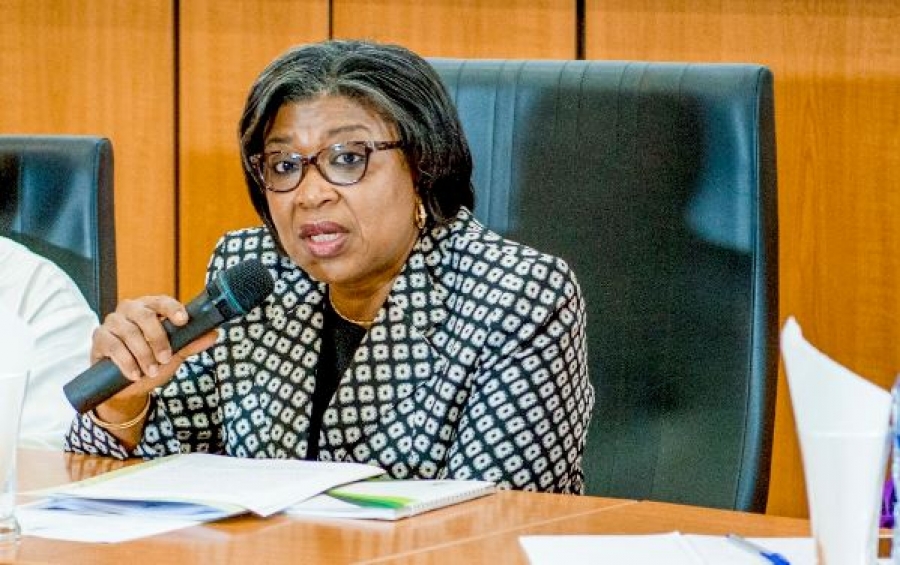The Debt Management Office (DMO) has stated that Nigeria’s debt profile as of December 31, 2022 is N46.25 trillion or $103.1bn.
In a statement on Thursday, DMO said there was an increase of over N7tr from what the country owned in 2021.
“Total Public Debt Stock consisting of the Domestic and External Debt Stocks of the Federal Government of Nigeria (FGN) and the sub- national governments (the 36 State Governments and the Federal Capital Territory) was N46.25 trillion or $103.1bn. The comparative figure for December 31, 2021, is N39.5tr or $95.77bn.”
“In terms of composition, Total Domestic Debt Stock was N27.55tr ($61.42bn) while total external debt stock was N18.7tr ($41.6bn).”
Nigeria’s debt rose to N46.25trn in 2022 – DMO
Labour cautions FG on petrol subsidy removal
It stated that the reasons for the increase in the Total Public Debt Stock were New borrowings by the Federal Government and sub-national governments, primarily, to fund budget deficits and execute projects.
“Meanwhile, the Total Public Debt to Gross Domestic Product (GDP) ratio for December 31, 2022, was 23.20% and indicates a slight increase from the figure for December 31, 2021, at 22.47%.
The ratio of 23.20% is within the 40% limit self-imposed by Nigeria, the 55% limit recommended by the World Bank/International Monetary Fund, and the 70% limit recommended by the Economic Community of West African States.”
Eurobond constitutes the highest borrowing
Another report released by the DMO disclosed that the bulk of Nigeria’s external borrowing is from multilateral agencies constituting 48.4 percent of the government’s borrowing with $20.2bn while the borrowing from commercial sources came second with 37.46 percent amounting to $15.6bn.
The total external debt is $41.6bn
But individual borrowing, the largest chunk of borrowed funds, came from Eurobond with $15.6bn, this is followed by the World Bank with $13.4bn and the International Monetary Fund $3.2bn.
Others include; African Development Bank $1.5bn, Africa Growing Together Fund $18m, African Development Fund $955.6m, Arab Bank for Economic Development in Africa $5.52m, European Development Fund $38m, Islamic Development Bank $140m, Int’l Fund for Agricultural Development $252.7m.
Bilateral loans which constitute 12.15 percent of external debt ($5bn), indicated that Nigeria borrowed more from China (Exim Bank of China) $4.2bn, followed by France (Agence Francaise Development) $535.9m, Germany (Kreditanstalt Fur Wiederaufbua) $144.5m, Japan (Japan International Cooperation Agency) $62.7m and India (Exim Bank of India) $30.3m.
For domestic debts, the total is N22tr, with the FGN Bond the highest source of borrowing with N16.4tr, amounting to 73.94 percent, this is followed by the Nigerian Treasury Bills N4.42trn (19.9 percent), Promissory Notes N530bn (2.39 percent), FGN Sukuk N742.5bn (3.34), Nigerian Treasury Bonds 50.9bn (0.23 percent), FGN Savings Bond N27.5bn (0.12 percent) and Green Bond N15bn (0.07 percent)
FG paid N2.2tr, over $312m for debt servicing, interest payment
The report also said the federal government paid a total of N2.2tr in 2022 as debt servicing for while N317.7bn was paid for debt repayment for domestic debt.
On the other hand, the government paid a total of $312.2m for external debt in the fourth quarter of 2022, comprising of $194.7m for interest; $92.7m as principal payment, $20.4m as service fee, $80.4m for deferred interest $115,951 for penalty, $2.1 for waiver and $1,9m for commitment charges.
Nigeria risks borrowing to service debt if new administration is not innovative
Commenting on Nigeria’s debt Profile, a financial analyst, Paul Alaje, stated Nigeria may resort to borrowing to service debt if the new administration is innovative to increase revenue generation.
Alaje, while stating that Nigeria’s debt is now over N77tr if the ways and means is added, stated that the government should be willing to work with financial experts on revenue growth and investment opportunities.
“The incoming administration will only manage to service this debt, the administration may suffer setbacks because, as we speak, the cost of service by 2025, if it is going at this rate, will be more than the revenue generated. Already we are over 50 percent, the cost of service to revenue is getting worse, therefore the new administration must find innovative ways of generating more revenue to reduce the poor ratio between cost of service and revenue as we have it today.”
“If we don’t do that, by 2027 to 2031, obviously as our revenue dwindles, we are having to deal with exchange rate disparity, high inflation and low tax, even though the absolute figure may look higher but in the relative terms our taxes are getting lower.”

 Join Daily Trust WhatsApp Community For Quick Access To News and Happenings Around You.
Join Daily Trust WhatsApp Community For Quick Access To News and Happenings Around You.


